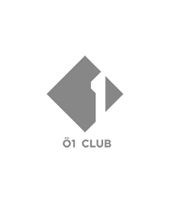MAX OPPENHEIMER, Porträt Egon Schiele, 1910 © Wien Museum| Foto: Wien Museum/Foto Birgit und Peter Kainz
MAX
OPPENHEIMER
EXPRESSIONIST PIONEER
06.10.2023-25.02.2024
MAX OPPENHEIMER
EXPRESSIONIST PIONEER
With the most comprehensive retrospective to date on the Vienna-born artist Max Oppenheimer (1885–1954), the Leopold Museum is inviting visitors to rediscover a significant yet almost forgotten oeuvre. The exhibition illustrates how radically the painter acquired his ever evolving and distinctive signature style, formulating a substantial contribution to modern art in the process.By the 1910s Oppenheimer was already a well-known artistic personality. While leading galleries and museums in Austria, Germany and Switzerland showcased exhibitions of his works, museum and private collections also included them in their inventory.
Curator: Hans-Peter Wipplinger
Curatorial Assistant and Projectcoordination: Aline Marion Steinwender
As an innovator, Oppenheimer was also at the forefront of many avant-garde movements. Together with Oskar Kokoschka and Egon Schiele, he was among the young artists who broke away from the painterly traditions of the Secession in a move that would prove pivotal for Austrian modernism and helped Austrian Expressionism to its breakthrough. Along with Paul Klee, Alfred Kubin, Schiele and others, he was an active member of the Munich artists’ group SEMA, which had its first exhibition at Galerie Thannhauser in 1912. He was also one of the first here in Austria to engage with Cubist imagery and Italian Futurism, incorporating their progressive conceptions of form into his work in his own idiosyncratic way. He was a co-initiator of the journal Die Aktion in 1911, for which he contributed numerous works in subsequent years, and a founding member of Zurich’s Cabaret Voltaire, the Dadaist association for which he also showed a number of works at its first exhibition at Galerie Coray in Zurich in 1917. It is also worth noting that, in his music-themed paintings, he was one of the first to work with elements of New Objectivity. Given all these innovative paths and, indeed, his successful career path, it is all the more surprising that the recognition Oppenheimer so clearly deserves has eluded him in the last few decades.
One reason may be his unsettled way of life and the fact that he relocated so many times as a result. While such a nomadic lifestyle was in part of his own volition, it was to a certain extent also brought about by two world wars and the ensuing phases of emigration. The fact that Oppenheimer lived and worked in many cities and countries also means that his works are widely scattered and that their whereabouts remain in part unknown to this day – insofar as they were not banned and subsequently burned as ‘degenerate art’ under the Nazi regime or destroyed in the chaos of war.
- Max Oppenheimer created an iconic poster to advertise his first exhibition in Munich in 1911 at the Thannhauser Gallery. The motif became a scandal and the police banned it, which reinforced Oppenheimer's success and fuelled the envy of at least one artist: Oskar Kokoschka. Kokoschka saw in the poster a copy of the motif he had created in 1910 for the magazine Der Sturm. The accusation became public and Kokoschka forwent no opportunity to expose his fellow artist in letters and newspaper articles.
- Unlike the encounter with Oskar Kokoschka, the one with the artist Egon Schiele, who was five years younger, turned out to be fruitful. Oppenheimer and Schiele probably met in the course of the 1909 Kunstschau in Vienna and became friends on Schiele's initiative. Schiele saw some parallels in their work and wanted to show his works to Oppenheimer. The first visit to Schiele's studio in Kurzbauergasse 6/23 in the 2nd district of Vienna was followed by an intensive time together, in which they hardly put down their brushes and pencils. Due to financial difficulties, they decided to share the studio for a few months. Meanwhile, they portrayed each other graphically and in paintings.
“The work breaks forth from a chaos of emotions – nature is manyness – art is oneness.”
Max Oppenheimer, 1910
EARLY PORTRAITS
Through his participation in the Vienna Kunstschau exhibitions of 1908 and 1909 Oppenheimer came into contact with prominent representatives of Vienna’s art and cultural scene and portraited them. Oppenheimer’s artistic development towards a more expressive form manifested itself first and foremost in a reduced palette featuring somber tones reflective of a painting style committed to realism and a focus on capturing the essence of the individual sitter. Oppenheimer was therefore one of the first to experience and actively shape the turning point towards Expressionism, on the front line as it were.
The most expressive parts of the human body in psychological terms, i.e. the head and hands, became the focal point of his portraiture as he set about depicting the ‘human soul.’ Oppenheimer’s creative output was also influenced by the theosophical studies popular in the early 20th century insofar as they considered the aura of the individual. Indeed, the light apparent in the paintings seems to envelop the sitter’s body like an inner glow.
CHRISTIAN AND MYTHOLOGICAL MOTIFS
Around 1910, Max Oppenheimer began to deal with Christian iconography and created several works with corresponding motifs. He embedded the stories in his own visual language and often wove autobiographical elements into his compositions, clearly visible in the works Deposition from the Cross, Samson, Scourging and Lamentation.
- The painting "The Scourging" was first exhibited at the Berlin Secession in 1913 and went on to become one of the artist’s main works. The center of the composition is taken up by the figure of the flagellated man. The elongated male body stands directly opposite the viewer, its right arm draped over the head, and flanked by tormentors. The four male figures grouped around him take turns flailing his body. In the background, bystanders are depicted following the action. The bottom edge of the picture is dominated by sharply painted cloths, soaked in blood. The triangular composition created by the two legs of the floggers is repeated above in the radiating stellar configuration. It is striking that Oppenheimer depicts Christ and his tormentors with the same nakedness, which means that each figure in the painting becomes interchangeable.
- In Egon Schiele’s studio in 1911, Oppenheimer created his work entitled "Samson": ‘If you have a moment, please take a look at my painting (Samson) at Schiele’s; I think it might be quite good. [...] Indeed, it consists of no more than three colors: grey – yellow – pink (?). The rest is neutral, light and dark.’ (Letter to Arthur Roessler, 21.3.1911) Delirious with love, Samson reveals to his lover Delilah the source of his power, which he ultimately loses following her betrayal. The contours of the naked bodies are particularly striking as, indeed, are the conspicuously enhanced muscles. The background consists of nothing other than heavy drapery. Here, too, the influence of El Greco (1541–1614) is clearly in evidence in the composition of the figures.
A PASSION FOR MUSIC
One of Oppenheimer’s great passions was music, to which he had been exposed since childhood. The Hess Quartet, produced in 1914, was Oppenheimer’s first painting to be set in a music context; numerous other paintings on a musical theme would follow, right into old age.
The years spent in Switzerland in particular, between 1915 and 1924, saw an in-depth exploration of musical themes through the medium of painting. His main focus was on the depiction of acoustic phenomena, congenially expressed using both Futurist and New Objectivity stylistic devices.
BERLIN IN THE GOLDEN TWENTIES
As early as 1930,Oppenheimer created a first version of the chess match. At that time he had been living in Berlin again for several years and was soaking up the hustle and bustle of the big city. Berlin was the metropolis and the epitome of the Golden Twenties. However, Oppenheimer tried to capture the zeitgeist not only with the help of dancing couples or swinging jazz musicians, but also by depicting this strategic board game.
“I believe that, in the artist Max Oppenheimer, taste and ability, a reverence for good tradition and a vibrant innovative drive all blend together in a very fortuitous and harmonious way.”
Max Brod, 10.10.1908
NEW YORK EXILE
An exhibition planned for the Kunsthaus Zürich provided the occasion for Oppenheimer to flee the Nazi regime and escape to Switzerland. After his rushed departure from Vienna, he would never set foot on Austrian soil again. With his Swiss residence permit about to expire, the artist endeavored to obtain a visa for the United States. Thanks to the help of friends and acquaintances in New York, Oppenheimer managed to have his documents issued just in time. His ship sailed into New York harbor on 12 January 1939. He had also been able to take some of his works abroad with him, and in 1940 they were put on show at the Nierendorf Gallery. For Oppenheimer – and, indeed, many émigré artists – life in exile proved to be extremely precarious. His uprooting resulted in a general apathy and a complete standstill of his original artistic creativity. He withdrew to focus on his work and repeated motifs from earlier times. Financially, he was dependent on the support of former companions and kept his head above water with portrait commissions. He moved into an artists’ hostel on Manhattan’s Upper West Side and adopted the name Maximilian Mopp.
After the Second World War, Oppenheimer was keen to bring back to Austria – ‘back home’ as it were – the monumental painting The Philharmonic (1936–51), which he had taken with him into exile. His return to Vienna was planned as a glorious comeback, yet his tireless efforts remained in vain. Oppenheimer died in his New York apartment in 1954, alone and impoverished.
In 1912 Oppenheimer painted Operation, which represents one of the earliest museum acquisitions of his works and has been owned by the Prague Národni galerie since 1915. Contemporary reviews read: “He composes his surgery picture in such a way that the heads, all pointed long skulls as in the Toledan, and the figures of the doctors and students form a circular funnel; in its depths floats the dissected corpse with all its bloody mesentery.” (Kunst und Kunsthandwerk, 1912) In 1951, while in exile in New York, Oppenheimer returned to the subject matter. This time, the artist captured the moment just before the first incision: no blood is flowing as yet, with the surgeon about to apply the scalpel. There is also a drastic difference in the coloring used in the two paintings. In the second version from the collection of the Austrian National Bank, Oppenheimer used a much lighter palette.
 MAX OPPENHEIMER, Surgery, 1951 © Collection Oesterreichische Nationalbank | Photo: Collection Oesterreichische Nationalbank
MAX OPPENHEIMER, Surgery, 1951 © Collection Oesterreichische Nationalbank | Photo: Collection Oesterreichische Nationalbank








